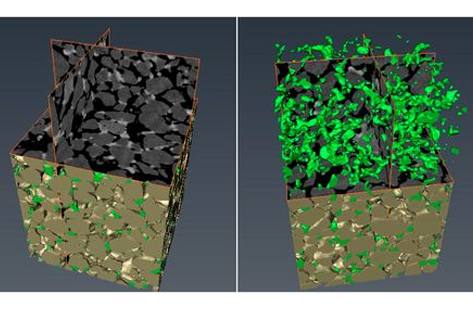Thermo Fisher Scientific › Electron Microscopy › Electron Microscopes › 3D Visualization, Analysis and EM Software › Use Case Gallery

We introduce the application of microbial-induced calcite precipitation via the ureolytic soil bacterium Sporosarcina Pasteurii in freeze-dried form, as a means of enhancing overall MICP efficiency and reproducibility for geotechnical engineering applications. We show that the execution of urea hydrolysis and CaCO3 precipitation persist as a “cell-free” mechanism upon the complete breakdown of rehydrated cell clusters. Further, strength and stiffness parameters of bio-cemented sands are determined. Medium-grained bio-cemented sand yields compressive strengths up to 12 MPa while, surprisingly, fine-grained sand yields up to 2.5 MPa for similar bond contents. To understand the observed discrepancies, we undertake a systematic study of the bio-cemented material’s microstructure, by combining a series of microstructural inspection tools. The study extends beyond conventional qualitative and textural characterization and provides with new insight into the material’s peculiar 3D micro-architecture. We apply a new methodology towards quantifying crucial microscopic characteristics such as the particle sizes of the crystalline bond lattice, the bond-grain contacts and particle orientations. Bonds are found to exhibit distinctive geometries and morphologies when MICP applies to different base materials. We thus contribute to the debate on the importance of factors affecting: (i) MICP efficiency, (ii) the mechanical response and (iii) peculiar micro-architecture of bio-improved geo-materials.
For Research Use Only. Not for use in diagnostic procedures.